Filipino Chicken Adobo
A good Filipino adobo is all about the proper vinegar/soy sauce ratio. I also share some cooking tips to make this throw-it-all-in-the-pot recipe a winner.
[For my Instant Pot version of chicken adobo, you can find the recipe here.]
[I’ve shared a short video of this recipe on my Instagram page if you’d like to see how it’s done.]
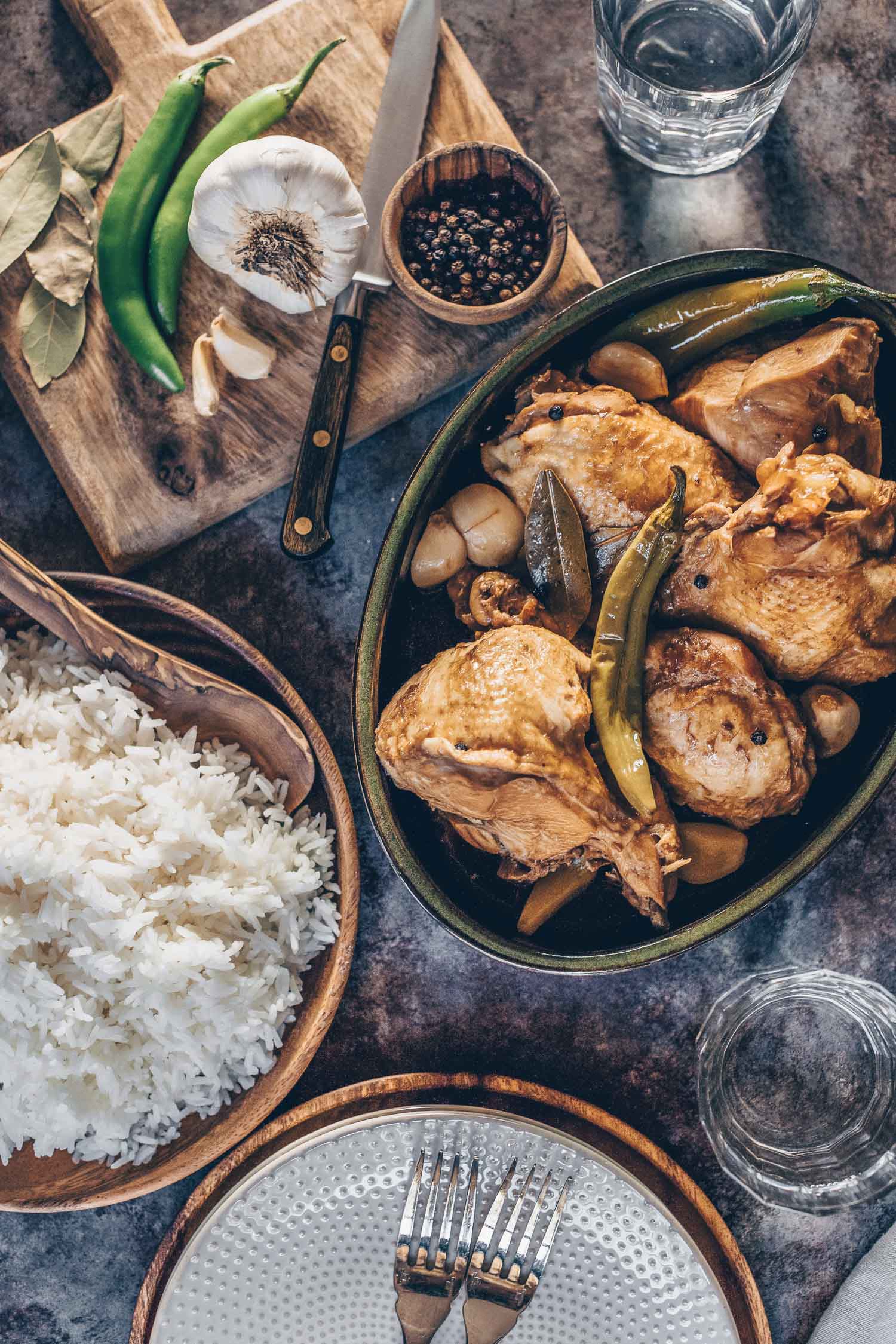
I woke up this morning with a dry, itchy throat. I had been dreading this since the past weekend when I first suspected that I might have been exposed to a nasty bug while out and about. I kept an optimistic attitude all morning, hoping that I would be able to fight this attack on my body but my head felt cloudier with each passing hour and by noon had given up all hope of being productive and succumbed to lethargy.
I had a pot of broccoli-carrot soup from last night so lunch required no effort at all and a light nourishing soup may have been what my ailing body needed but I’ll be honest–when I feel under the weather my cooking just doesn’t satisfy like my mom’s does.
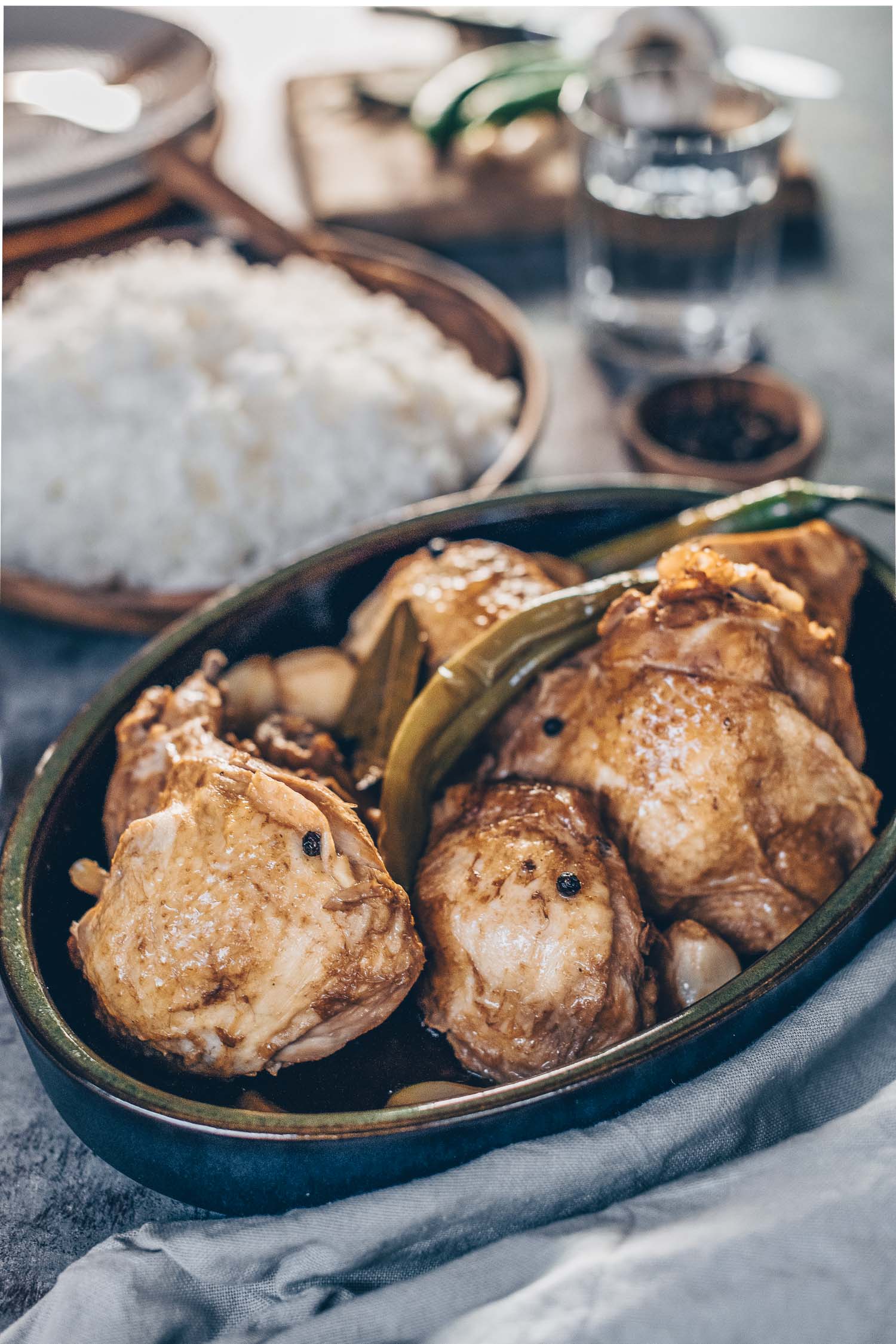
There’s never a time when I don’t feel in the mood for my mother’s cooking but on days like this I crave it more. She lives two hours away so I can’t just show up at her doorstep and yield to her demands to feed me (being sick is never a prerequisite for this, by the way).
What’s the secret anyway? Why is mom’s version of a dish (yours or mine) always the best? Is it familiarity? The TLC that she lavishly seasons every dish with? It’s most likely a combination of the two and I’ll admit that I’ve been trying for years to capture that “mom essence” in my cooking and for some dishes from my childhood it’s taken some trial and error.
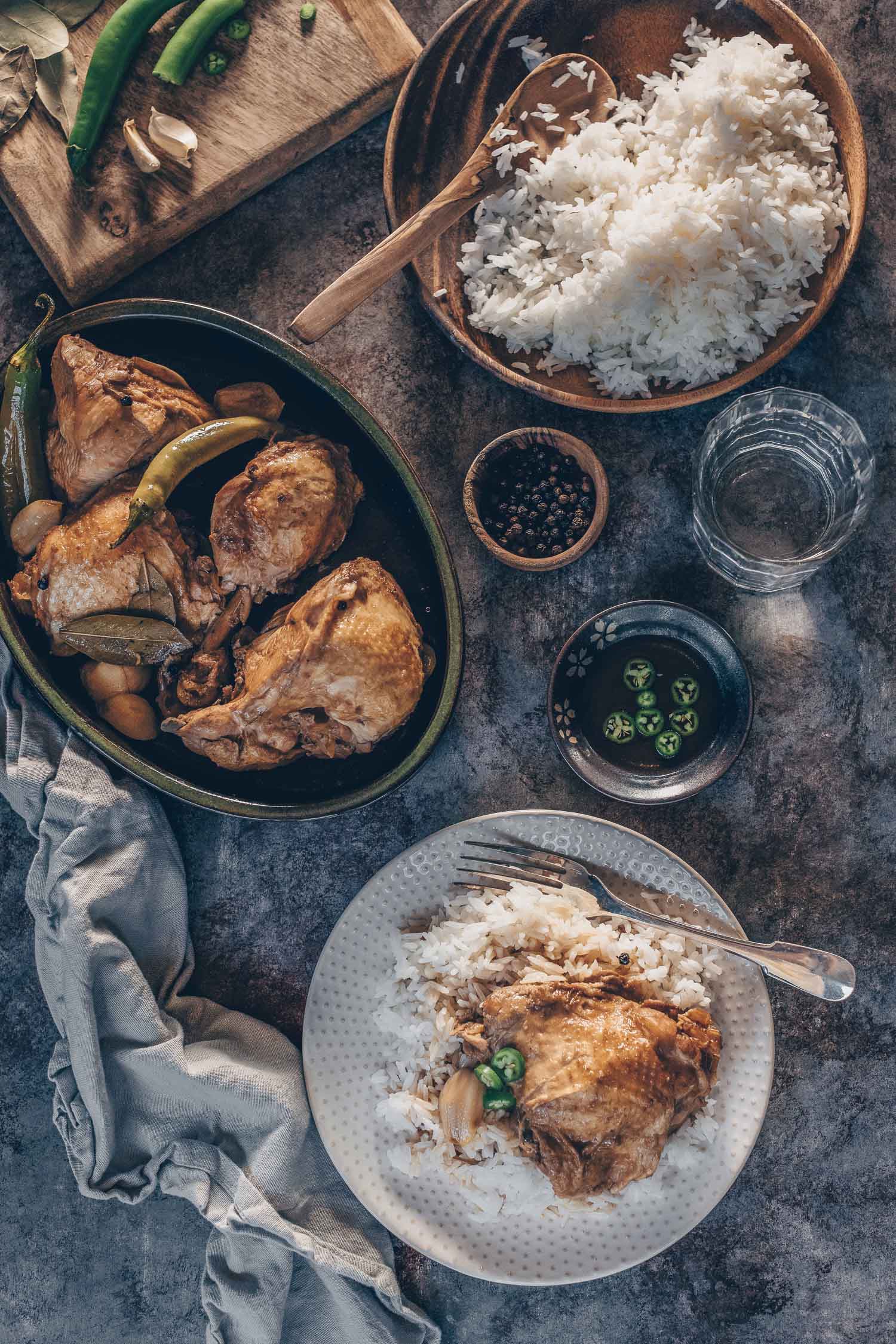
Adobo was one of them. This is the unofficial national dish of the Philippines with as many versions as there are home cooks. With only a handful of ingredients you’d think I would have been able to get it right the first time, but no. My adobo failures covered the spectrum–too salty, too sour, too sweet. I was Goldilocks who couldn’t achieve the right balance of flavors.
And, I say this respectfully, my mom was no help. She never measures her ingredients so I got lost in her “just a little of this” or “just enough of that” or “taste as you go”. Her secret was in those loose descriptions and I aimed to find the key.
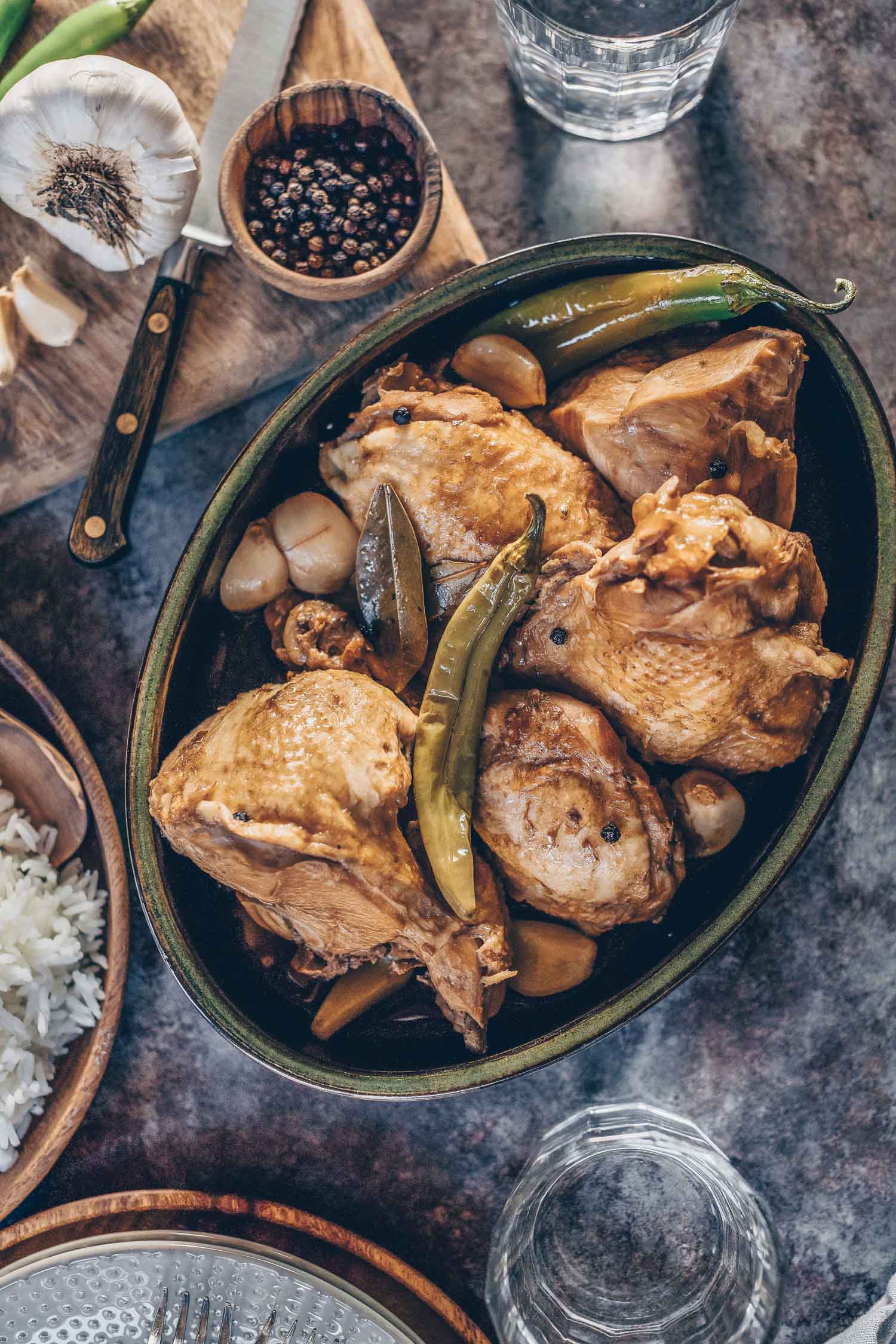
It might sound like I’m complicating something very simple but for me, the key to a good adobo is having the right balance of acidity and saltiness so that it’s complex instead of cloying. The flavor of adobo improves over time, making it ideal for cooking in large amounts since leftovers on day two, three, four or even five taste better (cooking in vinegar acts as a natural preservative so there’s no risk of spoilage).
It’s also at the leftovers stage that sweetness develops under the acidity; as you reheat adobo its flavors become more concentrated. One of my early attempts tried to capture this sweetness by adding sugar to my adobo and while this approach works, I wanted to get the sweet component without the added sugar.
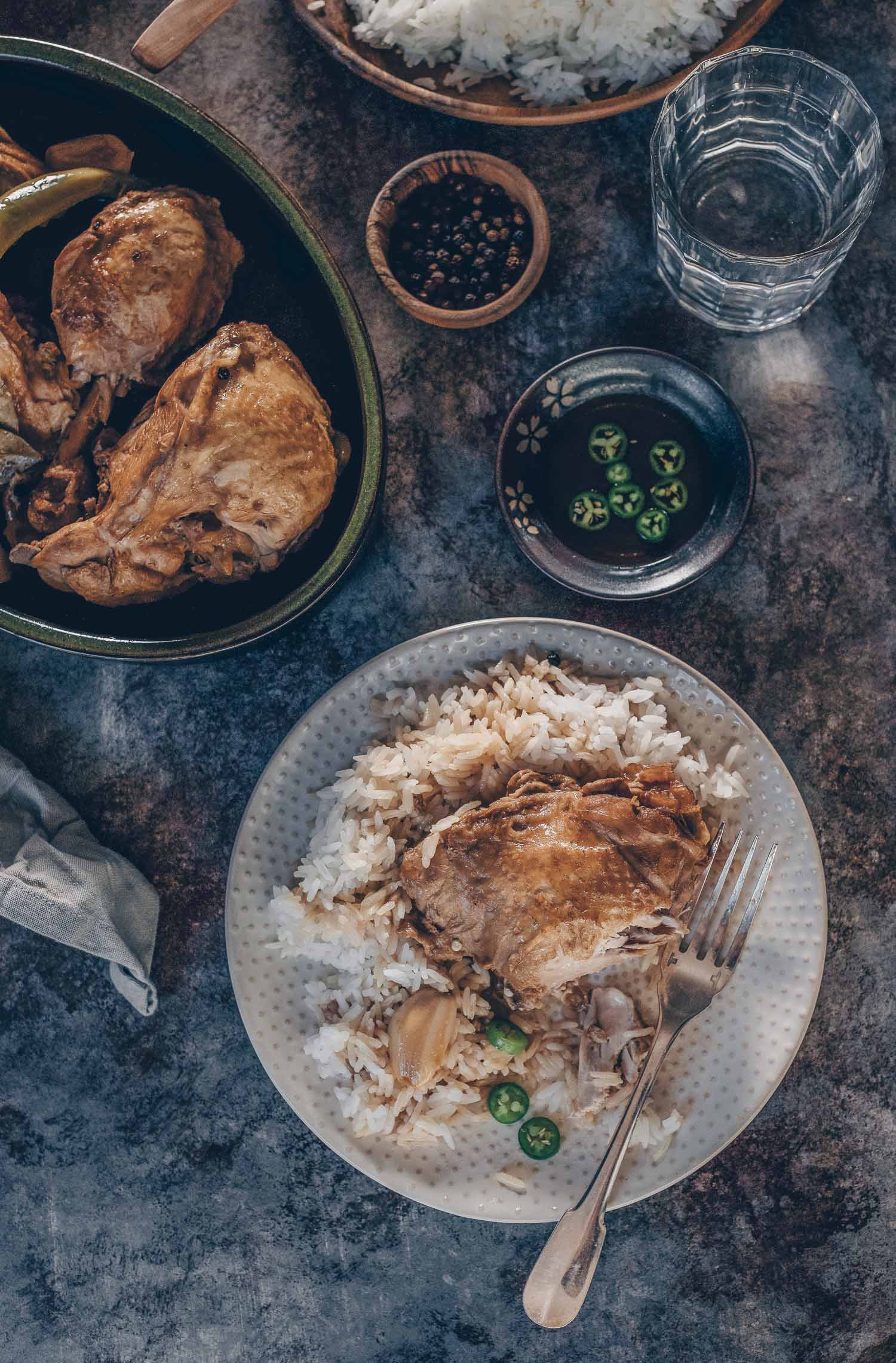
So What’s the Magic Ratio?
There is really no right answer to this question but my aim was to recreate the magic in my mother’s adobo and I found the ratio to be 2:1, two parts vinegar to one part soy sauce. The type of vinegar matters, too. If you can get Filipino cane vinegar I recommend it for adobo as it lends milder tartness compared to distilled vinegar which can be overpowering. Somewhere between the two are cider vinegar and Japanese rice vinegar which would work well for adobo, too.
My Adobo Notes and Tips
- Water: One way to manage adobo until you find your own magic ratio is to use water–start with just enough to mellow the vinegar and soy sauce without diluting the flavors too much. Alternatively, you can start with less soy sauce and vinegar and add them in small increments until your adobo is to your liking.
- My version of adobo starts out with lots of sauce but it reduces and thickens as it is reheated. If you’re a sauce hog like I am and like to drown your rice with it, you’ll find yourself short on sauce soon enough. If this happens, you can add a small amount of water, vinegar and soy sauce as you reheat it, keeping the ratio the same. The balance of flavors is not compromised.
- Marinate and/or Brown your Chicken: One of the best things about adobo is how no-frills it is. You can marinate the chicken first if you wish and/or you can brown the meat before you cook it but if you’re pressed for time, you can skip these steps without compromising the finished product. The chicken absorbs flavor as it marinates and browning the meat adds depth but for years I watched my mom just throw everything into the pot and her adobo was flavorful, never lacking. The cooking time is sufficient to build all the adobo flavor I want and, as I mentioned earlier, more complexity develops as it is reheated. (Edit 2/3/2023: These days I like to brown my chicken first but instead of frying the meat, I stick the chicken pieces under the broiler until the tops are golden. Less messy than frying them in oil on the stove.)
- Sugar: If you find your adobo too tart, add a little sugar to mellow it out. I would recommend adding a half teaspoon to one teaspoon.
Whatever approach you take–the no-frills route or going all out–keep this 2:1 ratio in mind until you determine what works best for you. If this recipe turns out not to be the final stop in your adobo journey, it’s a good starting point, at the very least. That first time I captured the elusive mom essence in the adobo that I prepared I got off the bus and never looked back.
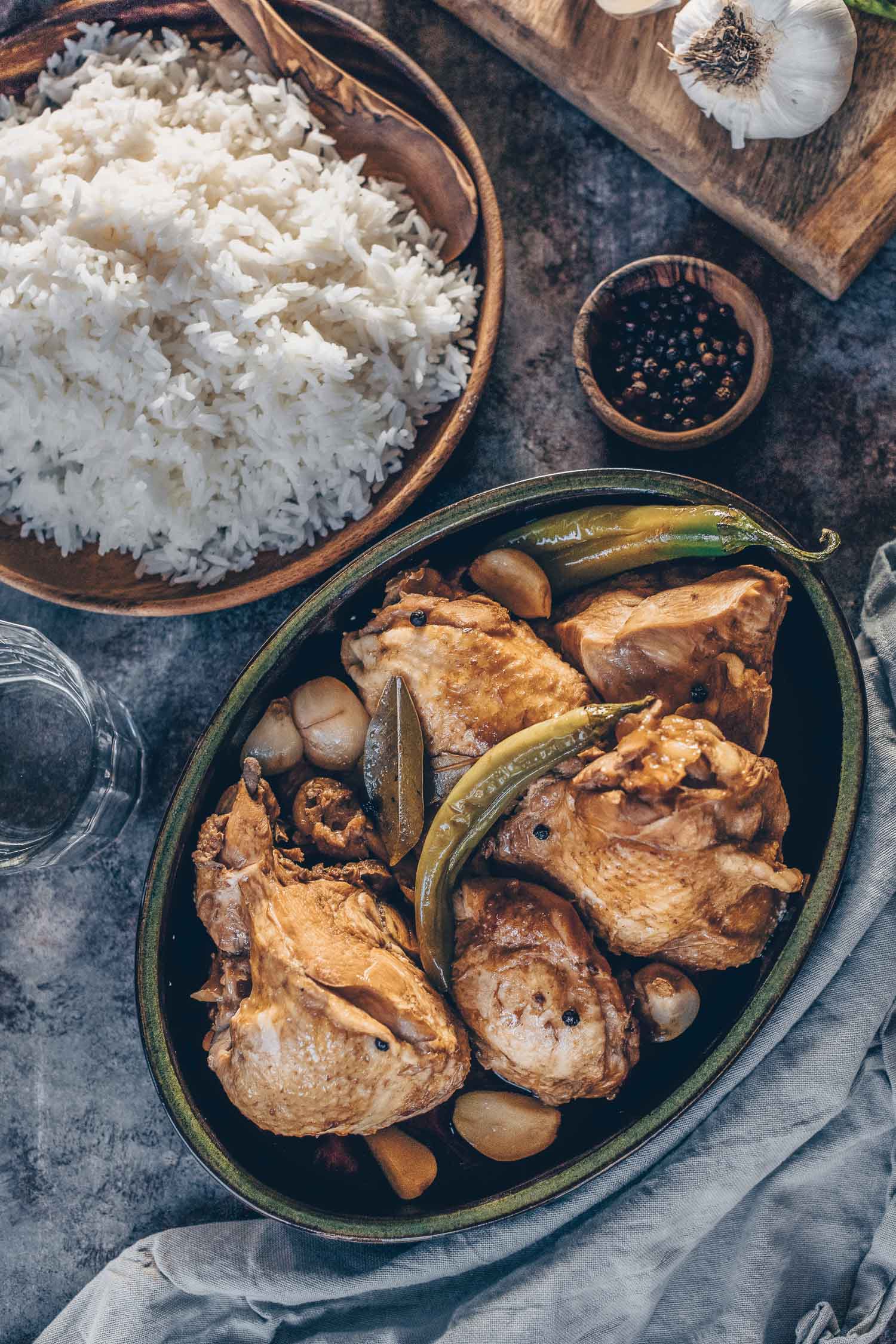

Filipino Chicken Adobo
A good Filipino adobo is all about the proper vinegar/soy sauce ratio. Follow my tips to make this throw-it-all-in-the-pot recipe a winner.
Ingredients
- 2 1/2 - 3 pounds bone in chicken pieces
- 1/2 cup vinegar (See Note)
- 1/4 cup soy sauce
- 1/4 - 1/3 cup water
- 6-8 cloves garlic, peeled
- 1 tablespoon whole black pepper
- 2 dried bay leaves
- Serrano chilies (optional)
- Fish Sauce for serving (optional)
- oil, for browning meat (optional)
- 1/2 - 1 teaspoon sugar (optional)
Instructions
(If you want to marinate and/or brown the chicken pieces first, please see the optional steps below.)
-
Add the ingredients from the chicken to the dried bay leaves in a large pot. Bring the contents to a boil, leaving the pot uncovered. Don't stir the liquid until it has come to a rolling boil. Cover, reduce the heat to simmer and cook until the chicken is tender, 25-40 minutes. If using the chilies add them to the adobo 10 minutes before the end of the cooking time. You can also leave the pot uncovered during the last 10 minutes of cooking to reduce the sauce a little. Serve with rice. (Note: If you find your adobo too tart, you can add the sugar to mellow it out.)
Marinate the Meat (Optional; see note)
-
If you choose to marinate the meat before cooking, simply combine the ingredients from the chicken to the bay leaves and let sit for at least one hour before cooking.
Brown the Meat (Optional; see note)
-
Heat a tablespoon or two of oil in a large pot over medium-high heat and brown the chicken pieces, skin side down first, in batches. Add all the chicken pieces back to the pot along with the vinegar, soy sauce, water, garlic, black pepper and bay leaves and cook as in original instructions above.
Alternatively, you can brown the chicken pieces by broiling them for a few minutes (my preferred method). Brush the tops with a little oil before broiling. Transfer the browned chicken pieces and any juices in the baking pan to a pot.
Recipe Notes
Marinating and browning the meat before cooking:
Marinating and/or browning the chicken before cooking it adds color and additional flavor but are not absolutely necessary. The chicken absorbs a lot of flavor as it braises in the vinegar/soy sauce even without these steps. Also, this is a dish that improves over time so reheated leftovers have more complex, concentrated flavor.
Vinegar:
Filipino cane vinegar is best but cider vinegar or Japanese rice vinegar would work, too.






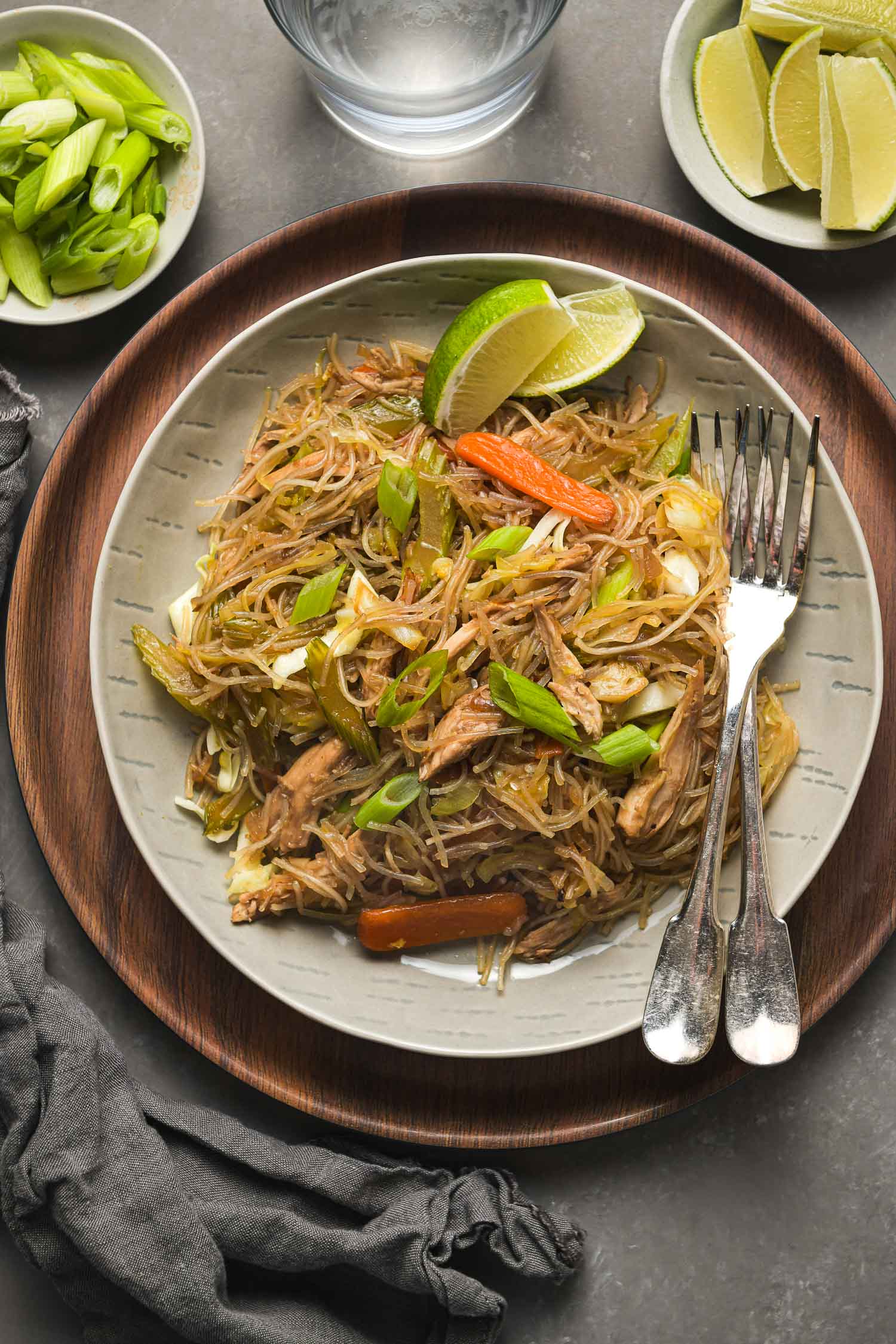
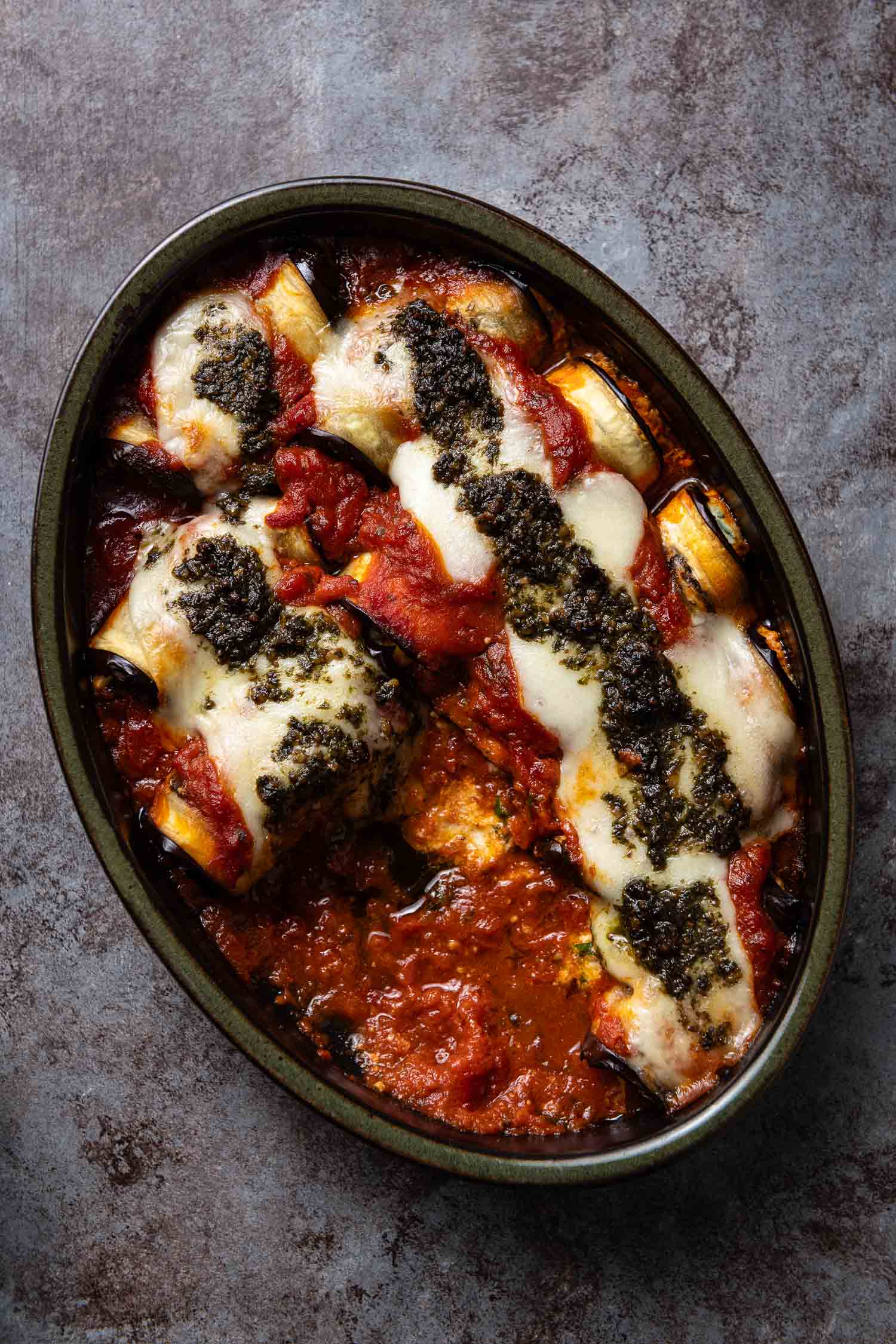
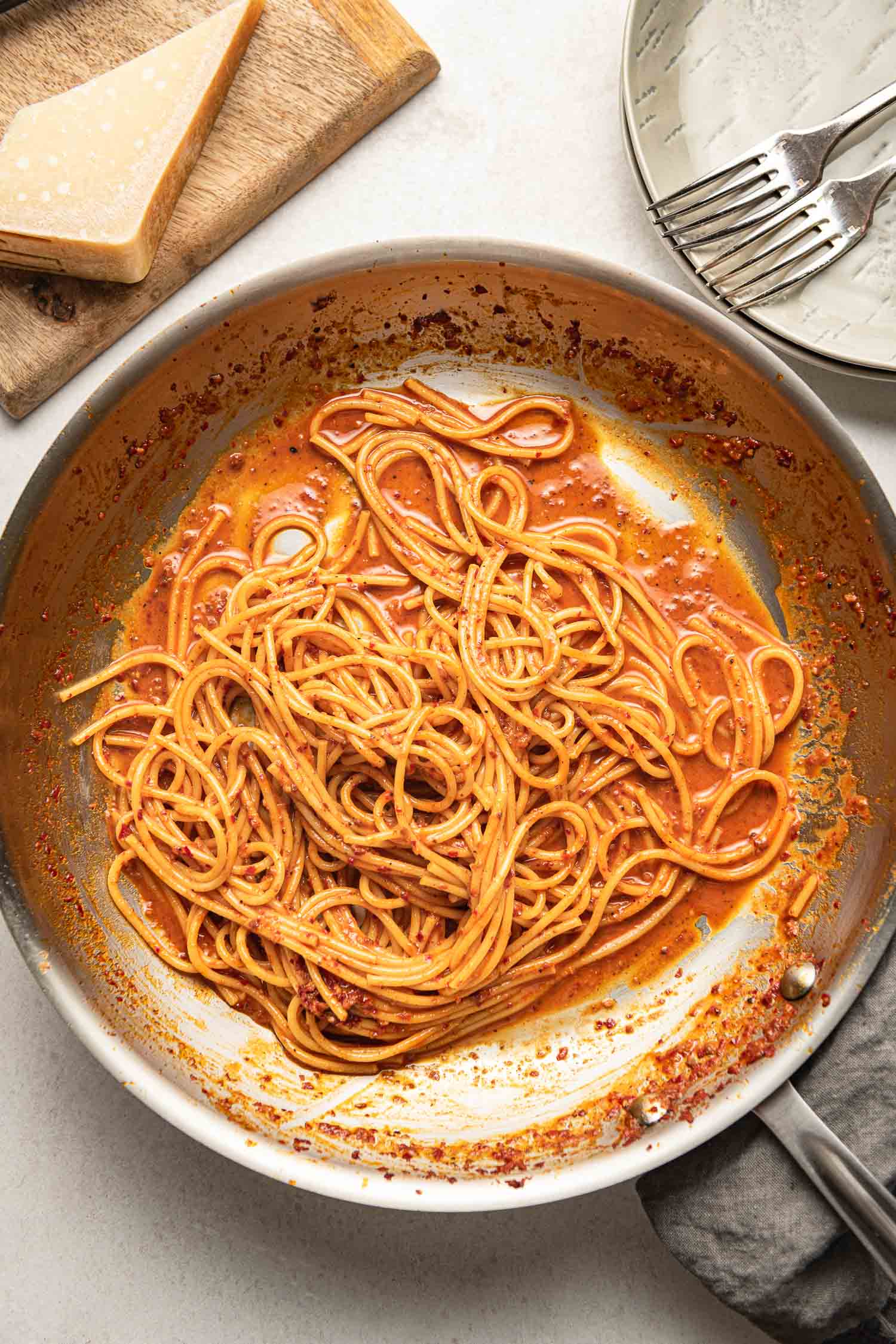

I love this recipe. I’ve made a similar version myself. I like to make more than we’ll eat the first serving because the shredded leftovers make wonderful (albeit unusual) tacos. GREG
This is how I make it. This is the original authentic chicken adobo. By any chance are you ka pampanga?
Gosh, I am kapampangan! Your comment made me happy and I’m so glad you approve of my adobo recipe. 🙂
You are right! It’s all about the ratio!! And ive done trial and error with this recipe too bc not only does my mom not use measurements, she also adds things every time i talk to her. One convo she’ll say add some water, the next she’ll say put sugar, the next she swears by ginger…and btw she is kapampangan as well! Anyway, thank you for this recipe! Im trying it tonight!
Hi, Serena. Your mom sounds like my mom. Hope this recipe worked out well for you. Thanks for giving it a chance.